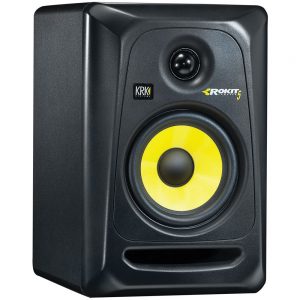#BAJAAOTechWeek: How to set up your own recording studio
We all have a ton of musical ideas that we want to write down as soon as they come to mind. Humming the idea on a phone recorder and making sense of it later doesn’t always work out! For musicians who constantly want to make music and put it out there for the world to see, we have some recommendations for you to put together your own home studio in a more affordable budget.
The machine to run it all - A good computer
Step one for a home recording studio is to get yourself a good computer. If you’re using Windows OS, you need a rig with at least 4GB RAM teamed with an Intel i5 or i7 processor for smooth recordings. You could also go for a Macbook Pro - 13" MD101 h/a, 2.5GB processor, and upgrade the hard drive and RAM later to suit your future requirements.
DAW
We advise you to get a good Digital Audio Workstation. Initially you may find it difficult to buy a pro DAW, so you can start off with a DAW bundle that comes with many additional things like recording software, headphones, microphones, etc. This sort of package deal is ideal to start off with.
If you want to purchase just the DAW, you can always try the Focusrite Scarlett Solo. You can get yours here.
The award winning company Focusrite also offers the Scarlett studio bundle that comes with a Scarlett 2i2 USB audio interface, Scarlett CM25 studio condenser mic, and a pair of Scarlett HP60 reference headphones.
Mixing and reference headphones
If you don’t want to get a bundle, you can always buy each component separately. You can get an affordable pair of headphones that would do the job just fine, like the Sennheiser HD 203 closed back headphones.
If you’d like to pick a pair of reference headphones, especially for recording vocals or other acoustic instruments that need to be miced, you can try the AKG K77 headphones.
A microphone
While many people use the Shure SM58 for practically everything that requires a microphone, you should also take a look at the Samson C01. This is a condenser microphone that can be used to record vocals, some ambient sounds and mainly acoustic instruments like guitars, percussion, etc. The Sennheiser e845 is also a steal of a deal - a quality studio microphone at a good price.
Studio Monitors
It is advised that you use 5” studio monitors especially if you are setting this up in your bedroom. Any monitors beyond 5” may require you to do proper acoustic treatment.
Your perfect solution would be a pair of the KRK Rokit 5 studio monitors - they’re multi-purpose loudspeakers that can be used as studio monitors, speakers to listen to music, or even rigged with your home theatre to watch movies or videos.
You could also try the Yamaha HS-5. If you are into producing a lot of EDM or trance music, the Yamahas have good low end and could be of great use.
Isolation pad for monitors
Isolation pads help absorb any frequencies caused by the room, especially if it isn’t acoustically treated. You can try the Ultracoustic ultra pad studio monitor isolation system. The pads need to be placed under the monitors as shown below
Cables
We suggest Neutrik connectors, as they are high quality and are often used in professional studios. For the cables, Spectra cables are a good option. They’re durable and reliable and will last longer than other cables in the same price range.
Software
As you know, your recording software is the main place where your tracks will be recorded, and maybe even mixed and mastered. There is free software available online as well, but we recommended you splash the cash for the studio/pro versions. Reaper is one of the most widely used software currently. It’s user-friendly and quite detailed at the same time. You can also try other software like FL Studio and Reason.
Hope you find this article useful. If you need more details, you can always contact our executives at BAJAAO!
← Older Post Newer Post →


 Used Gear
Used Gear
 Connect
Connect











